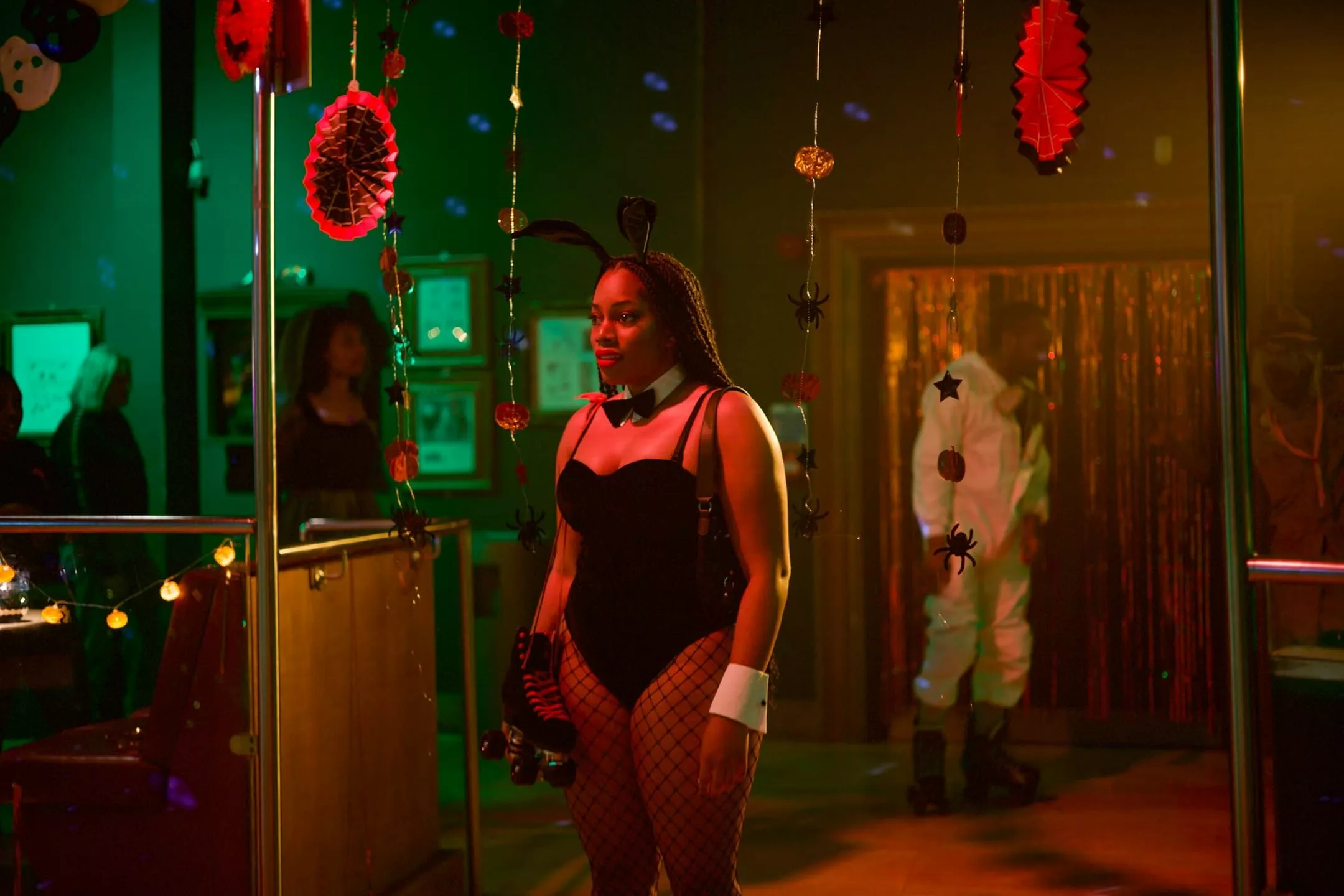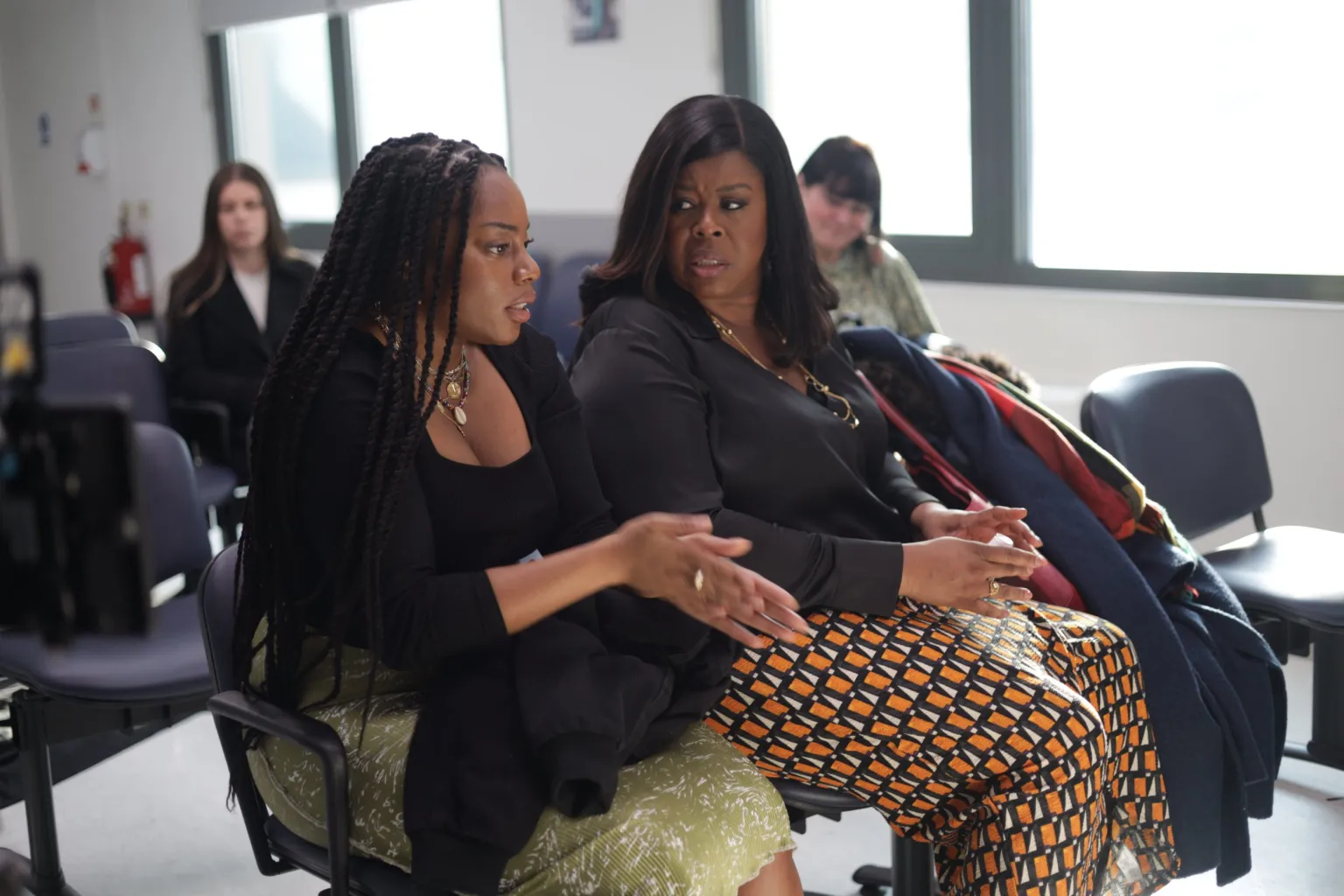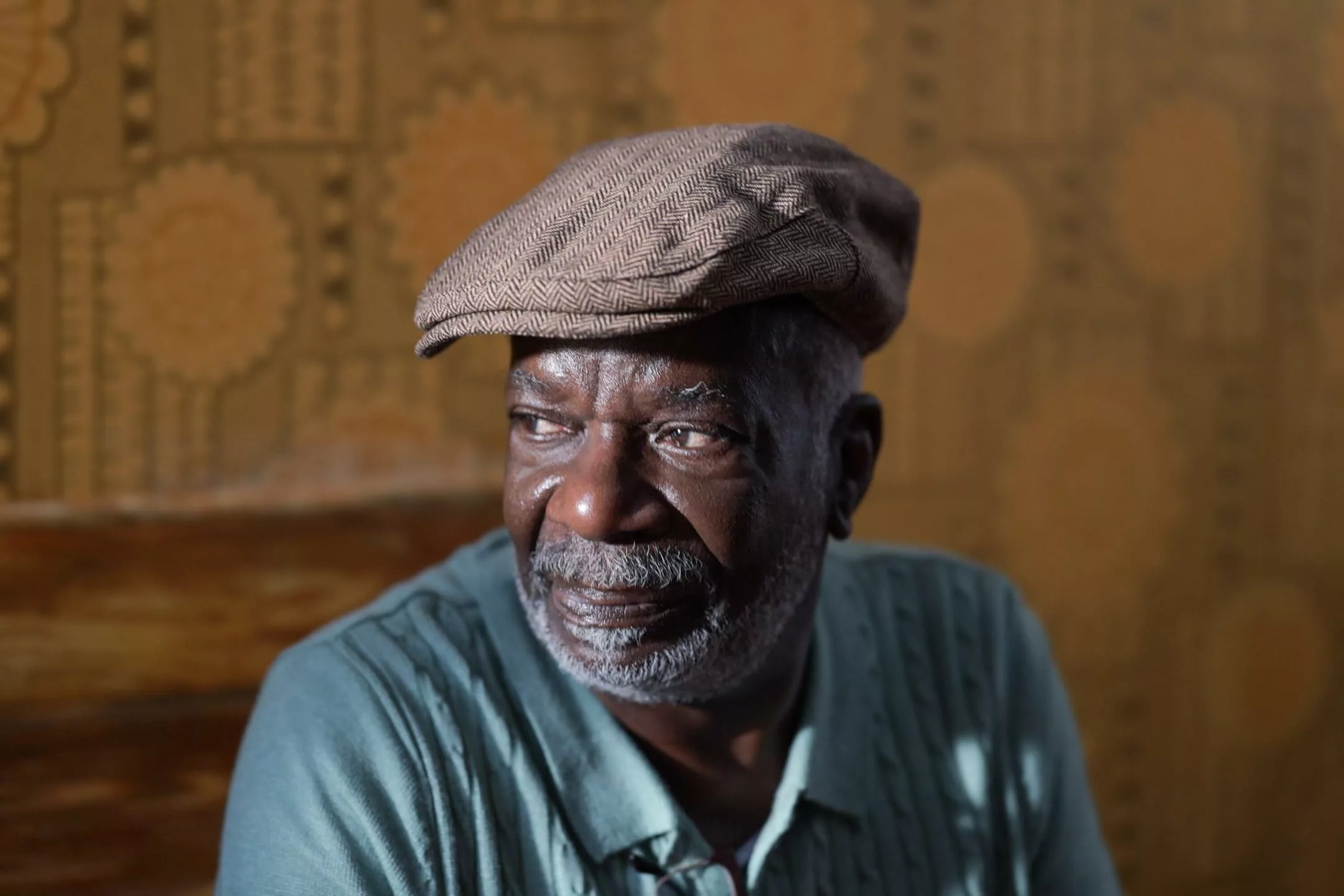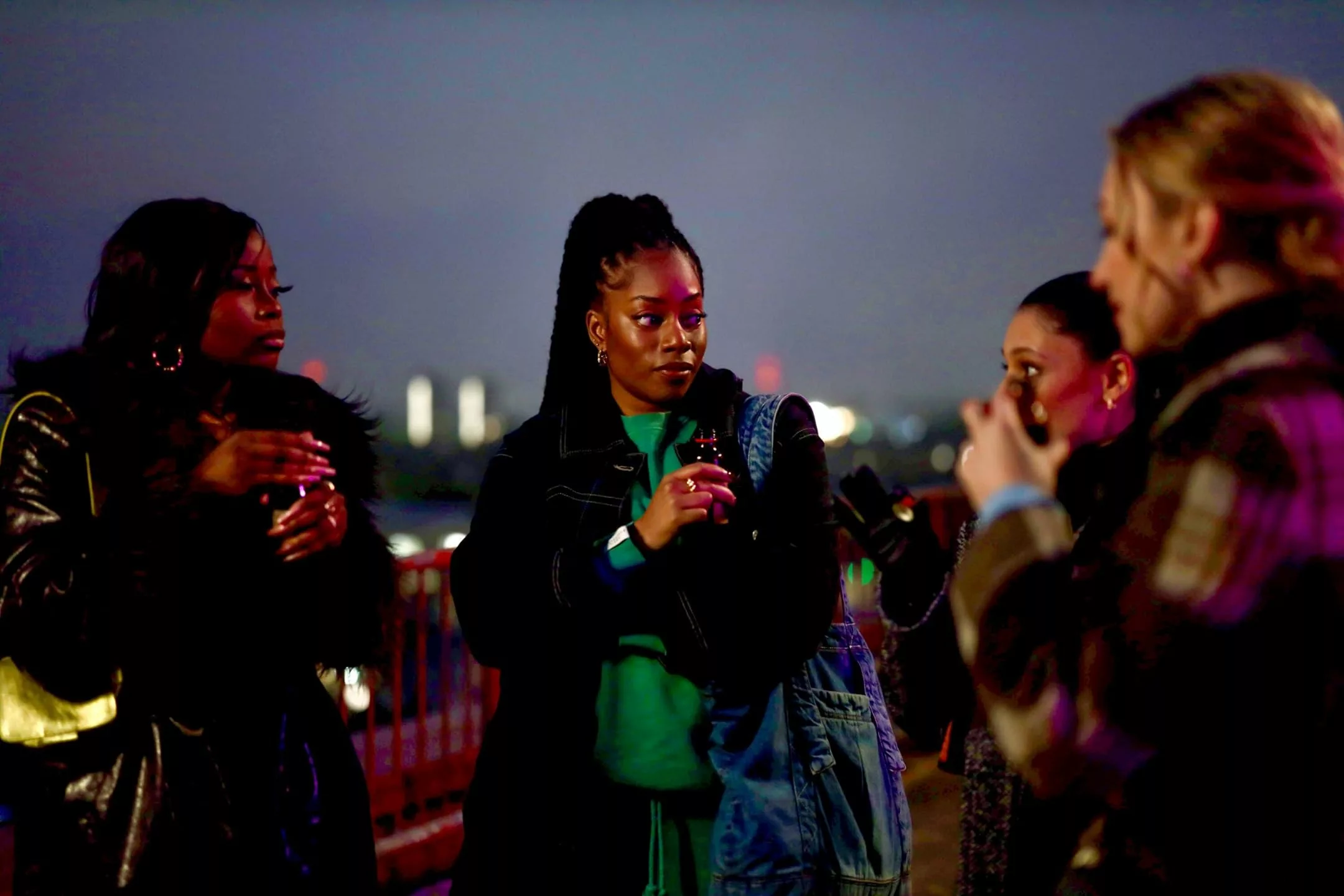Queenie Jenkins is finding her way in London. Still coming to terms with the end of a long relationship, the 25-year-old is trying to put the pieces of her life back in order. A recent health scare and workplace troubles only add to Queenie’s uncertainty about who she is and where she’s headed.
Adapted from Candice Carty-Williams’ acclaimed novel, the new TV series follows Queenie as she navigates relationship challenges, questions of identity, and ambitions for her career in media. Setting out on her own has not been easy in the bustling city, yet through it all, Queenie shows strength and humor.
While the story draws from familiar themes of self-discovery and modern dating, Queenie’s experience as a black British woman brings unique insight. Both the struggles and joys springing from her background give the show resonance. How Queenie rediscovers her sense of self and place in the world, with empathy and spirit, makes for compelling viewing. Her journey is one many can relate to in some way.
Queenie’s Journey of Self-Discovery
The series begins by introducing Queenie Jenkins, a 25-year-old living in London and dealing with heartbreak on multiple fronts. We learn she recently suffered a miscarriage in her long-term relationship, adding pain to the aftermath of her breakup. Beyond personal hurdles, Queenie grapples with finding purpose in her career in media.
Over the episodes, Queenie’s background slowly emerges. Flashbacks reveal the lingering trauma of her mother abandoning her in childhood. Now living with her grandparents, Queenie faces constant jabs about never fully committing to others. In the meantime, she struggles to have her ideas respected at work, feeling pigeonholed into stereotypical roles.
Queenie’s attempts to move on take mixed forms. A rebound relationship brings momentary comfort but little substance. Casual dates provide fleeting validation yet brush over deeper needs. Professionally, sacrificing her writing dreams for social media tasks brings frustration.
Through it all, Queenie discovers that regaining equilibrium means accepting her past on her own terms rather than others’. She also realizes that repaving relationships requires honesty, both with others and with herself. Career progress hinges on self-belief and pursuing true passions, not predetermined routes.
Queenie’s journey sees realistic ups and downs as she rediscovers self-worth. Brown brings nuanced vulnerability to the role, beautifully showing Queenie’s mix of strengths and weaknesses. Her struggles feel grounded yet leave room for growth. The interweaving of relationships, career, and identity makes for a compelling, multi-layered story of a young woman finding her way.
Character at the Core
At the heart of Queenie is Dionne Brown’s captivating portrayal of the eponymous character. Through her nuanced performance, Queenie feels intensely real—a flawed yet endearing woman grappling with life’s challenges. Brown breathes humanity into each scene, imbuing Queenie with warmth and vulnerability.
Queenie’s struggles ring true, from struggling relationships with herself to uneasy bonds with others. Supporting roles offer perspective on her journey. As ex-Tom, Jon Pointing effectively embodies the pressures pushing them apart despite their lingering care for one another.
Kyazike, brought to life by Tempestt Bledsoe, serves as a candid friend to Queenie, though their bond shows strains as Kyazike’s patience wears thin. As editor Gina, Sally Phillips nails the character’s contradictions—cutting yet caring in her approach to mentoring Queenie’s career.
Collectively, these performances prevent the characters from becoming stereotypes. Their complexity mirrors life’s uncertainties and diverse and ever-shifting relationships. No persona feels one-dimensional or simply fulfills a narrative function.
Rather than passing judgment, the characters acknowledge life’s interwoven factors shaping each individual. Queenie’s understanding of herself and how she relates to others deepens as the series unfolds. Brown and the ensemble cast elevate the material through emotionally grounded portrayals that respect nuance over simplification.
Ultimately, Queenie triumphs through the compassion and realism Brown brings to her titular character. She leaves the audience having gained insight into an engaging protagonist’s journey of self-discovery through connection with fully formed people that feel authentic on screen.
Finding Herself
Queenie delves into some weighty themes as she navigates tumult in her personal and professional lives. At its core lies an exploration of identity—from grappling with race in a predominantly white space to unpacking the scars of abandonment by her mother at a young age.
Relationships take center stage as Queenie reckons with the breakdown of her romance and seeks comfort elsewhere. We gain an understanding of the complex forces shaping one’s self-worth and sexuality. Modern dating brings challenges and misunderstandings, even among allies.
As a black British woman, microaggressions and stereotyping cloud many of Queenie’s interactions. From colleagues dismissing her talents to inappropriate remarks from strangers, these experiences accumulate, leaving scars. The series shines a light on silencing many women of color.
Mental health is also a thread throughout as Queenie works to process deep-rooted trauma. Her rash behavior hints at lingering wounds, and she struggles to accept aid from loved ones. Brown infuses the character with vulnerable humanity, bringing poignancy to her highs and lows.
Overall, Queenie paints an intimate portrait of forging identity amid life’s curveballs. Themes like relationships, career, family, and mental well-being intersect to tell a story many can relate to in some way. Most resonantly, it highlights the persistence, humor, and spirit so many black women employ to find themselves each day.
Taking Shape
Beyond the story itself, Queenie brought the novel to life through creative visuals and an authentic dramatic tone. While production values remained modest, artful direction molded the tale.
We witness Queenie’s world unfold through a blend of dynamic location shooting and intimate close-ups. London locales bustle to place us in her neighborhood. Meanwhile, tight shots emphasize emotional nuance as inner turmoil plays out on Brown’s expressive face. Together, these techniques immerse us in Queenie’s reality.
As for tone, deft balancing shapes a drama that’s honest yet humane. Brown delivers frustrating missteps and toxic liaisons with conviction yet vulnerability, eliciting empathy amid tough lessons. Her sardonic narration offers solace, easing the harder scenes. Meanwhile, bursts of humor prevent the mood from becoming too dreary.
This tonal dance between laughter and heartache mirrors life’s ups and downs. Like in the novel, authentic details of modern dating ring true while subverting stereotypes through three-dimensional characters. Queenie feels refreshingly real amongst shows saturating airwaves with polished, preening protagonists.
In translating page to screen, this series breathes vibrant life into a multifaceted character. Though not groundbreaking, Queenie uses visual and emotional intelligence to sincerely capture the trials of a young black woman coming into her own. Relatable yet thoughtful, its style does the source proud.
Speaking to a New Generation
Queenie makes its mark by authentically conveying the black British experience to a young audience. In following the trials of its twenty-something protagonist, the series taps into issues of representation, identity, and modern culture in a way few UK shows achieve.
Central to its impact is how vividly Queenie portrays the daily challenges facing black women today. From navigating public assumptions to weighing career against relationships, her story resonates across racial lines while presenting nuances often overlooked. Brown excels at expressing the defiant yet vulnerable spirit so many can relate to.
As one of the few mainstream dramas spotlighting Gen Z black Britons, Queenie gains importance. Its vernacular, humor, and emotional honesty reflect the voices so long absent from our screens. By locating itself in diverse London neighborhoods, the series authentically captures what it means to come of age in an evolving society.
Yet specificity remains key to Queenie’s relevance. From intergenerational dissonance to navigating social spheres not built with women of color in mind, subtleties embedded in Queenie’s experience shape her journey in a way art must acknowledge to drive understanding.
With wit and empathy, Queenie sparks conversations that elevate marginalized narratives. In spurring reflection on intersectional challenges and humble joys alike, the show connects with its generation to move discussions forward. Queenie’s impact lies in speaking to future-seeking fresh faces that feel like home.
Finding Relevance Through Imperfection
While not without its missteps, Queenie importantly moves discussions forward. At its best, the show sparks reflection on black womanhood’s intricacies through its flawed but relatable protagonist.
Brown excels in humanizing Queenie’s journey, imbuing her search for self-worth with humor, heartache, and defiance representative of many experiences. Despite criticisms, the series maintains cultural value by uplifting such underserved perspectives.
Queenie’s manner of addressing issues like representation, intimacy, and identity may feel familiar to some. But for others, imperfect as it is, the program supplies long-denied visibility that can motivate change. By bringing such narratives into the mainstream, the series meaningfully expands civic understanding.
While not a flawless dramatic triumph, Queenie ultimately achieves significant impact by starting raw dialogues too long deferred. In highlighting black joy and pain alike, it cultivates the sort of empathy that moves society toward justice. For bringing fresh voices and igniting crucial talks, Queenie leaves an impression well worth watching.
The Review
Queenie
In conclusion, while Queenie has its flaws in execution, at its heart lies a powerful mission to amplify underrepresented Black British voices and shed light on intersecting challenges faced. Dionne Brown turns in a compelling lead performance that grounds the series and keeps its entertainment value intact despite occasional missteps. While not flawless television, Queenie sparks meaningful discussions on societal growing pains and represents an important step forward for mainstream UK programming.
PROS
- Authentic portrayal of Black British female experience and issues
- Strong central performance from Dionne Brown
- Engaging exploration of themes like identity, relationships, and career
- Cultural significance as an underserved perspective enters the mainstream
CONS
- Plotlines and character development lack of depth at times
- Hit-and-miss humor and tone feel uneven.
- Fails to sustain narrative momentum across all episodes
- Comparisons to superior shows highlight shortcomings





















































